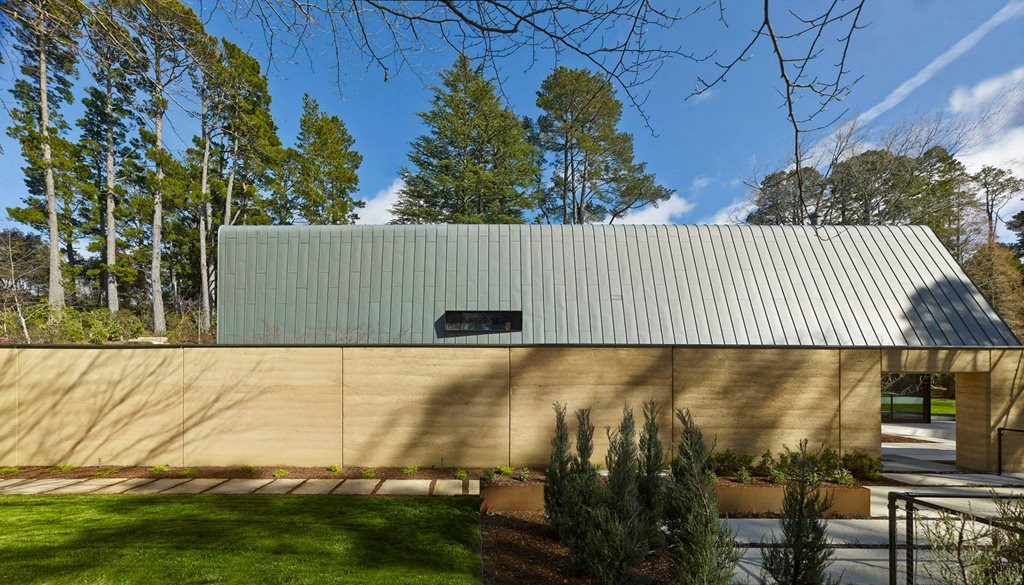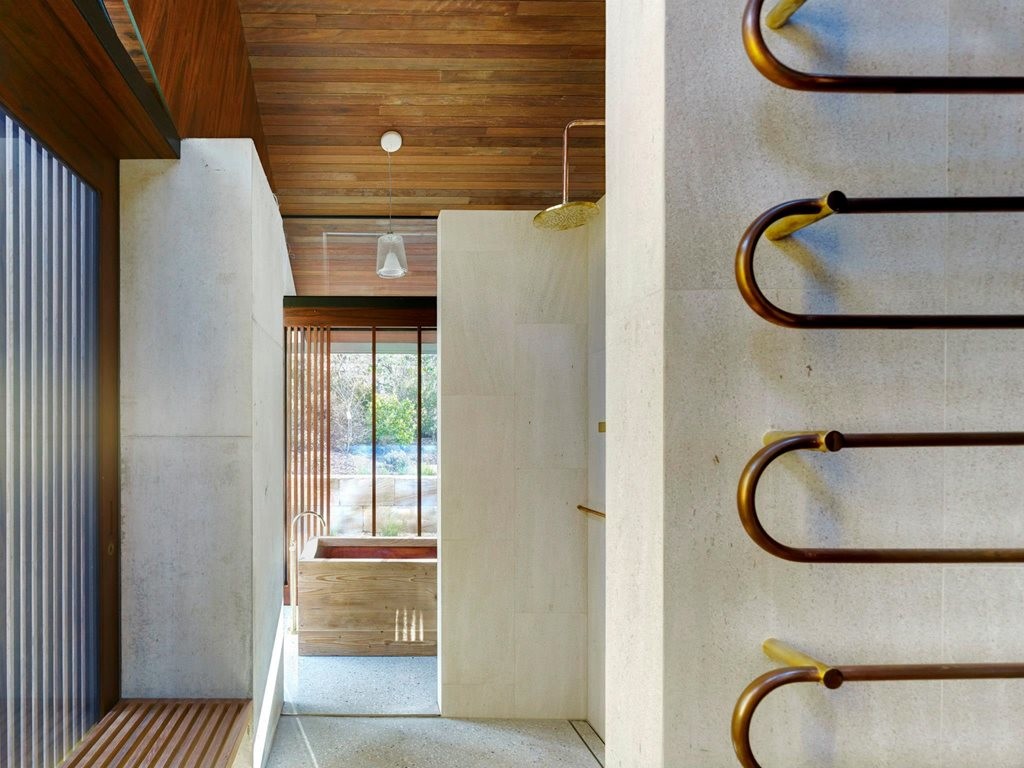The Australian residential design sector began 2015 with a bang following news from the NSW Blue Mountains that a Peter Stutchbury Architecture project has reached completion.
‘Pirramimma’, Aboriginal for ‘under the moon and stars, is the latest from the Sydney-based firm that gave us the 2014 House of the Year, Invisible House, also located in the Blue Mountains.
Much like Invisible House, Pirramimma strikes a balanced response to the site, marrying the existing landscape with built form through material selection and an almost countersunk presence.
According to a video from project developers Yuncken, the client asked for a functional design that related very strongly to the garden and as is the norm with Stutchbury designs, project architects Nichole Darke and John Bohane responded with an open and airy space that appears reductive but is also highly detailed in its finishes.

 Above images: from Yuncken website.
Above images: from Yuncken website.
The house is located in the lower part of the site and a substantial portion of the 748 sqm building was excavated into the ground and wholly contained within the footprint/external walls of the old dwelling, thereby reducing its prominence from the street.
Probably the most striking element of Pirramimma when looking from the exterior is its curved roof, a massive zinc form that spans on a slight pitch from the adjacent hill to the west before folding over at its ridge line and falling down the side of the building to make up the bulk of the eastern façade.
Below: North, east and south elevations. Images were taken by Michael Nicholson



The colour, Rheinzink Graphite Grey from Craft Metals that was pre-weathered, was chosen to keep with the site’s bushland character and to integrate the building with the landscape, while the double standing seam profile accentuates the roof’s rolling form.
The rammed earth walls, Corten art sculptures and terraced gardens outside the house are other transitional elements for visitors as the move from the landscape into the building which is dominated by more robust materials such as class-1 offform concrete pillars, hardwood doors and fibre cement sheeting.

The detail in the roof form is easier to inspect from the inside where the cambered LVL beams (covered in laminated lining boards) dominate the space and bath under the light of the long spanning skylight that runs the length of the house.
Recycled ironbark is used throughout and in combination with the house’s copper plumbing fittings and hand railings, patina chimney flue, lighting features and massive hardwood doors, add warmth to the interiors.
Although you might not have guessed it, the entire dwelling comprises a garage, storage and cellar area on the basement floor, living room, dining room, kitchen, three bedrooms, bathrooms and laundry on the ground floor and a main bedroom, en-suit and music room/library on the first floor level.
^What’s a house without a little fun? Look closely and you can see that Peter Stuchbury Architecture has added a bespoke wheel-drive door for the hell of it. Image: Yuncken Facebook.
Like the Invisible House, the Peter Stutchbury Architecture team’s attempt to integrate the building with landscape saw them countersink the building so as to sit within the vistas of the surrounding topography.
This meant that they could fit a lot under the one (quite unique looking) roof.



 All images, unless explicitly stated, are from: Yuncken or taken by Michael Nicholson Photography.
All images, unless explicitly stated, are from: Yuncken or taken by Michael Nicholson Photography.

